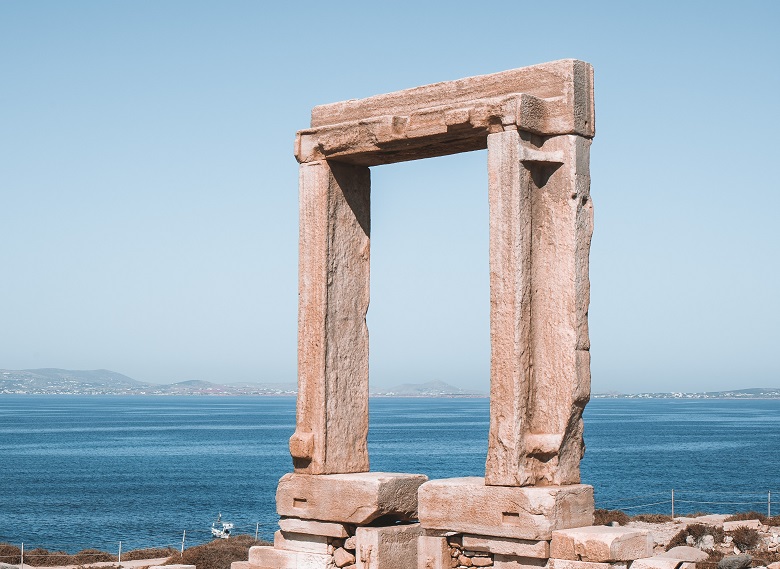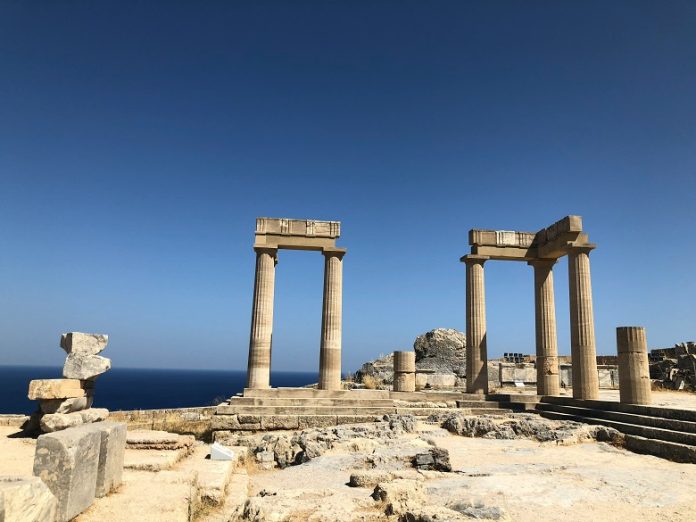Naxos marble is one of the most distinctive and treasured natural stones of Greece, with a history stretching back to antiquity and continuing into modern architecture and interior design. Its refined aesthetics, clarity, durability, and unique color have made it a timeless choice in both the domestic and international markets for natural stone.
Geological and Aesthetic Characteristics
Naxos marble originates from limestone formations that underwent significant metamorphism. Its most characteristic feature is its white or off-white background, interlaced with golden, yellowish, or light grey veining that creates an impressive natural pattern. This marble stands out for:
-
Its radiance and light-reflecting properties.
-
Its high resistance to wear and aging.
-
Its ease of polishing and smoothing, making it ideal for decorative applications.
Historical Journey
The quarrying and craftsmanship of Naxos marble date back to the early Archaic period, with evidence of its use as early as the 8th century BCE. Naxos became one of the earliest and most important centers of marble sculpture in the Greek world, with organized extraction, processing, and trade of marble. Local marble played a foundational role in the development of Cycladic and Archaic art, influencing the technical and aesthetic practices of neighboring Aegean islands.
Its use is linked to the evolution of sculpture, from the abstract figurines of the Early Cycladic period to the more realistic and monumental works of the Archaic age. The soft texture of freshly quarried Naxos marble allowed sculptors to polish and shape it more easily, enabling the development of advanced carving techniques and the creation of pioneering artworks for the era.
One of the most emblematic examples is the Kouros of Melanes, an unfinished 6th-century BCE statue approximately six meters long, which still lies in the ancient quarry where it was carved. This statue, along with other kouroi discovered on the island—such as in the village of Apollonas—represents the transition from the rigid forms of early sculpture to more naturalistic and lifelike expressions.
Meanwhile, the Portara, the monumental marble gateway of the unfinished Temple of Apollo (6th century BCE), towers over the harbor entrance of Naxos and serves as an iconic testament to ancient Naxian architecture. The marble used for its massive structural elements showcases the technical expertise and ambition of ancient Naxian builders.

The reputation of Naxos marble was not confined to the island. It was exported to other Cycladic islands and coastal cities, used in public buildings, temples, and sculptures, and became a competitive material alongside other prized marbles of the time, such as Pentelic and Parian marble.
Thus, Naxos marble was not only a material resource—it was a medium of cultural identity, contributing to the island’s recognition as a leading artistic hub of the ancient Greek world.
Modern Applications and Exports
Today, Naxos marble is widely used in:
-
Flooring and wall cladding
-
High-end bathrooms and kitchens
-
Sculptures and ornamental elements for interior and exterior spaces
-
Restoration of historical monuments and buildings
Its export activity remains robust, with strong presence in markets such as Italy, China, the United States, and the Middle East. Its natural beauty, combined with its cultural legacy, makes it an attractive material for both traditional and contemporary architectural projects.
Symbolism and Cultural Significance
Naxos marble is far more than a construction material—it is a symbol of timelessness, artistry, and cultural heritage. It is closely linked to the birth of sculpture in Greece, the development of Cycladic art, and the preservation of the simple, authentic beauty of the Aegean world.
Conclusion
Naxos marble represents a living chapter in the story of Greek stone—a material that embodies nature, history, and aesthetic harmony. Whether as raw material for ancient sculpture or as a luxurious feature in modern design, it continues to captivate and inspire across centuries.






































